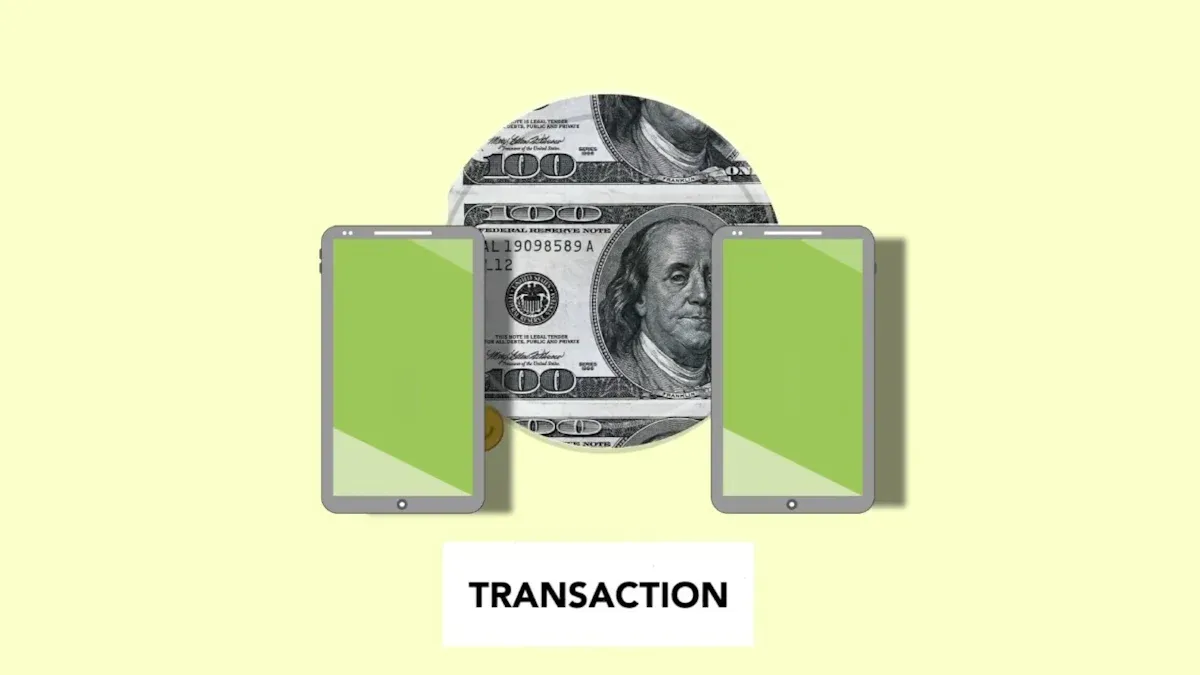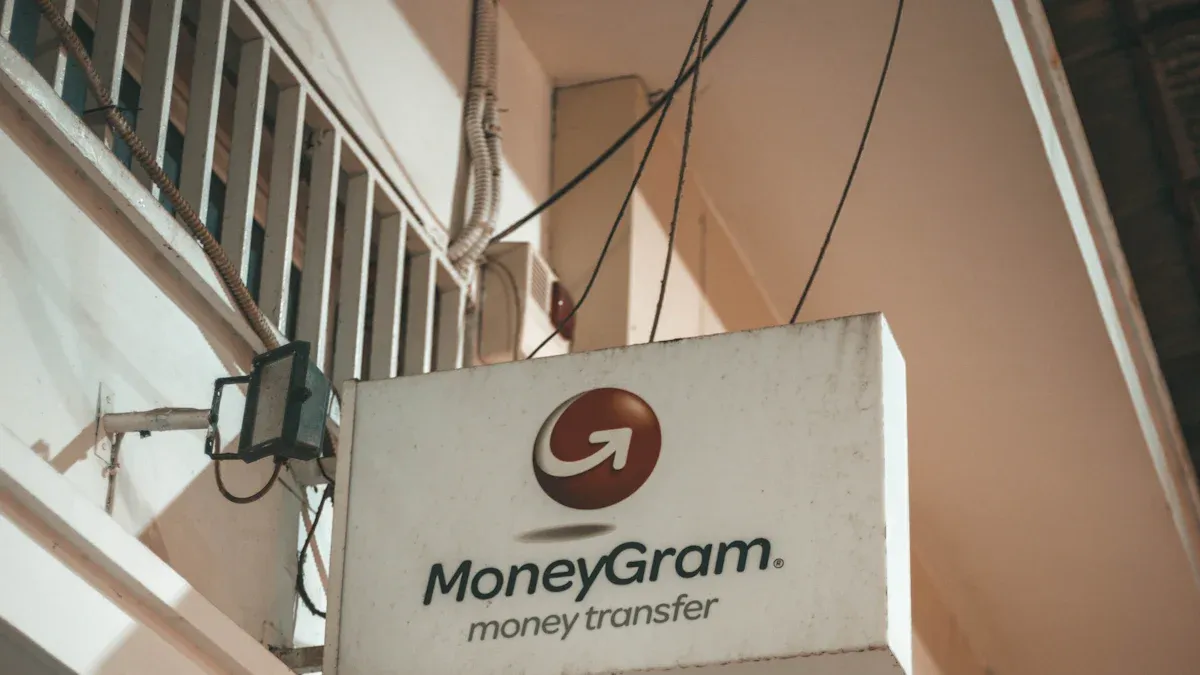- EasyCard
- Trade
- Help
- Announcement
- Academy
- SWIFT Code
- Iban Number
- Referral
- Customer Service
- Blog
- Creator
MoneyGram Guide for Converting US Dollars to Pesos: Conversion Methods, Exchange Rates, and Transaction Security

Image Source: pexels
This MoneyGram USD to PHP guide provides clear steps. You can learn how to safely and efficiently convert USD to Philippine Pesos.
You have two main remittance methods and three receiving options to choose from:
- Remittance Methods: Online (App/Website) or offline agent locations.
- Receiving Options: Cash pickup, bank transfer, or mobile wallet.
Tip: Digital platforms have become mainstream. In the Philippines, 75% of remittances are completed through digital channels. Mobile wallets are especially popular among younger users due to their convenience.
Key Points
- You can choose online or offline methods to send USD to the Philippines.
- Online remittances are convenient and fast, while offline remittances are suitable for cash payments.
- When remitting, you need to carefully compare exchange rates and fees to get the best value.
- Paying with a bank account is usually the cheapest, while credit card payments may incur additional fees.
- You must verify recipient information and protect the transaction reference number to ensure funds are secure.
MoneyGram USD to PHP Guide: Two Core Methods

Image Source: unsplash
To send USD to the Philippines, you can choose between online and offline methods. Online transactions are completed via the MoneyGram app or website, offering convenience and speed; offline transactions require you to visit an agent location in person. This MoneyGram USD to PHP guide will detail the specific processes for both methods to help you choose the most suitable option.
Online Remittance Steps
Online remittance is the most popular method, allowing you to complete transactions without leaving home. The process is highly intuitive and typically takes just a few minutes.
1. Preparation: Registration and Information
Before starting a remittance, you need to prepare the following information:
- Your Information: You need to provide your full legal name, phone number, and address.
- Recipient Information: You need a fully verified GCash account, the recipient’s bank account details, or their accurate name for cash pickup.
2. Five Steps for Online Remittance
You can follow these five simple steps to send money easily via the MoneyGram app or website:
- Download and Log In: Download the free MoneyGram application on your phone or visit its official website. Then, log in to your profile or register a new account.
- Enter Remittance Details: Select the receiving country as “Philippines,” then enter the amount you wish to send. Next, accurately fill in the recipient’s information.
- Choose Payment Method: You can choose to pay using a bank account, debit card, or credit card.
- Review and Confirm: Carefully check all remittance details, including the recipient’s name, amount, and receiving method. If you spot an error, edit it immediately.
- Complete the Transaction: Confirm all information is correct, then submit and complete the transaction. You will receive a transaction reference number.
Remittance Limit Tip MoneyGram’s online remittance limit is typically $10,000 per transaction, with a total limit of $10,000 within 30 days. However, this limit is not fixed and can be affected by factors such as your payment method, the receiving country, and the receiving method. When you log in and start a remittance, the system will clearly display the maximum amount allowed for that transaction.
Offline Agent Location Remittance Process
If you prefer face-to-face service or need to use cash for remittance, visiting a MoneyGram agent location is a reliable option. These agent locations are typically found in convenience stores, post offices, or banks.
1. Find the Nearest Agent Location
You can easily find nearby agent locations using MoneyGram’s “Find a Location” tool on its website.
- Visit the MoneyGram website and locate the tool.
- Enter your address, city, state, or zip code.
- The website will display a map showing nearby agent locations and their addresses.
2. Visit the Agent Location
Once you’ve found an agent location, bring the following items to process the remittance:
- Your Identification: Typically a government-issued valid ID, such as a driver’s license or passport.
- Remittance Funds: Prepare the USD cash you wish to send, plus the fee for processing the transaction.
- Recipient Information: Provide the recipient’s full legal name and location. If choosing a bank transfer, you’ll also need their bank account details.
At the agent location, staff will guide you to fill out a simple form, verify the information, and process your remittance. After the transaction is complete, you will receive a receipt with an 8-digit transaction reference number. Keep this receipt safe and securely share the reference number with your recipient. This number is critical for them to pick up cash in the Philippines. This MoneyGram USD to PHP guide emphasizes the importance of protecting this number.
Getting the Best Exchange Rates and Fees
To ensure every dollar maximizes its value, understanding exchange rates and fees is crucial. The final amount of pesos received by the recipient is determined by both the exchange rate and fees. This section will break down these costs and teach you how to find the best deal.
Exchange Rates and Fee Structure
When you send money, the total cost consists of two parts:
- Exchange Rate: This is the rate at which USD is converted to Philippine Pesos. A higher rate means your dollars convert to more pesos.
- Transfer Fee: This is the service fee MoneyGram charges to process your transaction.
Your total cost can be expressed with a simple formula:
| Component | Description |
|---|---|
| Remittance Amount | The USD amount you wish to send. |
| Transfer Fee | The service fee charged by MoneyGram. |
| Total Payment | Remittance Amount + Transfer Fee. |
| Received Amount | (Remittance Amount × Exchange Rate) = Final amount of pesos received. |
Thus, finding the best deal means focusing not only on low fees but also on securing a competitive exchange rate.
Impact of Payment Methods on Exchange Rates
Your chosen payment method directly affects your total cost and remittance speed.
- Bank Account Transfer
- Cost: This is usually the most economical option. Paying via bank account often provides better exchange rates and lower fees than card payments.
- Speed: While most online bank transfers are instant, in some cases, funds may take up to 2 business days to arrive, especially during bank holidays or weekends.
- Credit/Debit Card
- Cost: Card payments are typically more expensive. Fees may be higher, and the exchange rate may be slightly worse.
- Speed: This is one of the fastest methods, with funds often arriving within minutes.
Credit Card Payment Hidden Cost Warning Be cautious when using a credit card for remittances. Many credit card companies (e.g., Capital One) treat transfers through services like MoneyGram as “cash advances” rather than regular purchases. This means:
- Additional Fees: You may need to pay a cash advance fee, typically 3%-5% of the transaction amount or a fixed fee (e.g., $10), whichever is higher.
- Higher Interest Rates: Cash advance APRs are often much higher than regular purchases, potentially nearing 30%, with no grace period, so interest accrues from the transaction date.
- MoneyGram Official Note: MoneyGram also notes that your credit card company may charge cash advance fees and related interest.
Tips for Checking Real-Time Exchange Rates
To lock in the best deal, you need to actively check and compare rates. This MoneyGram USD to PHP guide offers the following practical tips:
- Use MoneyGram’s Official Cost Estimator You can easily check real-time fees and exchange rates via MoneyGram’s app or website.
- Log in to your account and select “Send Money.”
- Enter the remittance amount and receiving country “Philippines.”
- Choose your payment method (e.g., bank account) and receiving method (e.g., cash pickup).
- The system will instantly display a detailed quote including fees and the current exchange rate.
- Shop Around for the Best Deal Don’t limit yourself to one platform. Compare MoneyGram’s quote with other remittance services like Remitly. Sometimes, other platforms may offer better rates or lower fees at specific times.
- Avoid Exchange Rate Traps Never exchange large amounts at airport or hotel currency exchange counters. While convenient, their rates are typically poor, costing you significant money. Planning remittances through online platforms in advance is the smarter choice.
Key Points for Ensuring Transaction Security

Image Source: unsplash
Your funds’ safety is the top priority. To protect your personal data and money, MoneyGram employs bank-level encryption technology and strictly adheres to global financial security standards like the Payment Card Industry Data Security Standard (PCI DSS). While the platform itself is secure, you still need to take key measures to ensure every transaction is foolproof.
Before Remittance: Verify Recipient Information
Before sending money, the most critical step is to repeatedly verify recipient information. A small error can lead to delays or even failed remittances. Be sure to confirm:
- Recipient Name: The spelling must exactly match the legal name on their ID.
- Bank Account/Mobile Wallet Number: Ensure the account number is accurate.
If you notice a minor spelling error in the recipient’s name after sending, you can try editing it through MoneyGram’s self-service portal. For significant errors, you may need to cancel the transaction and resend.
After Remittance: Protect the Transaction Reference Number
Upon successful transaction, you will receive an 8-digit transaction reference number. This number is critical.
This number is the key credential for cash pickup. Only share it with your recipient and never disclose it to any third party.
You can use this number and your last name to check the remittance status anytime via MoneyGram’s “Track a Transfer” tool on its website or app, confirming whether the funds have been collected.
Official Support and Issue Tracking
If you encounter issues or need to cancel a transaction, act immediately.
- Cancel Transaction: As long as the recipient has not collected the funds or the money has not been deposited into their account, you can usually cancel the remittance. You can log in to your online account or contact customer service to request cancellation. Note that once funds are deposited into a bank account, the transaction is typically irreversible.
- Report Issues: To report suspicious transactions, prepare your transaction receipt and 8-digit reference number so customer service can quickly locate the issue.
You can contact MoneyGram’s customer service through the following official channels:
- Customer Service Phone: 1-800-926-9400
- Customer Service Email: customerservice@moneygram.com
The core points of this MoneyGram USD to PHP guide can be summarized in three key steps. Follow them to complete remittances safely and efficiently.
- Choose the remittance method that best suits you.
- Carefully check exchange rates and fees to get the best value.
- Take necessary security measures to protect your funds.
Remember the two most critical security practices: repeatedly verify the recipient’s name and account details for accuracy, and never share the 8-digit transaction reference number with anyone other than the recipient.
FAQ
How long does it take for a remittance to arrive?
The remittance speed depends on your payment method. Using a credit or debit card, funds typically arrive within minutes. If you choose a bank account transfer, it may take up to 2 business days.
Does the recipient need to pay a fee to collect pesos?
No. Recipients in the Philippines do not need to pay any additional fees to collect cash or receive a bank transfer. All fees are paid by you, the sender, during the transaction.
What if my remittance fails?
If a remittance fails, MoneyGram will refund the principal and fees in full. You can check the reason for the failure, correct the information, and resend.
What if the recipient doesn’t have a bank account?
Cash Pickup is the Best Option
If the recipient lacks a bank account, you can choose the “cash pickup” option. They only need a valid ID and the 8-digit transaction reference number to collect cash at any MoneyGram agent location in the Philippines.
*This article is provided for general information purposes and does not constitute legal, tax or other professional advice from BiyaPay or its subsidiaries and its affiliates, and it is not intended as a substitute for obtaining advice from a financial advisor or any other professional.
We make no representations, warranties or warranties, express or implied, as to the accuracy, completeness or timeliness of the contents of this publication.




Contact Us
Company and Team
BiyaPay Products
Customer Services
is a broker-dealer registered with the U.S. Securities and Exchange Commission (SEC) (No.: 802-127417), member of the Financial Industry Regulatory Authority (FINRA) (CRD: 325027), member of the Securities Investor Protection Corporation (SIPC), and regulated by FINRA and SEC.
registered with the US Financial Crimes Enforcement Network (FinCEN), as a Money Services Business (MSB), registration number: 31000218637349, and regulated by FinCEN.
registered as Financial Service Provider (FSP number: FSP1007221) in New Zealand, and is a member of the Financial Dispute Resolution Scheme, a New Zealand independent dispute resolution service provider.



















